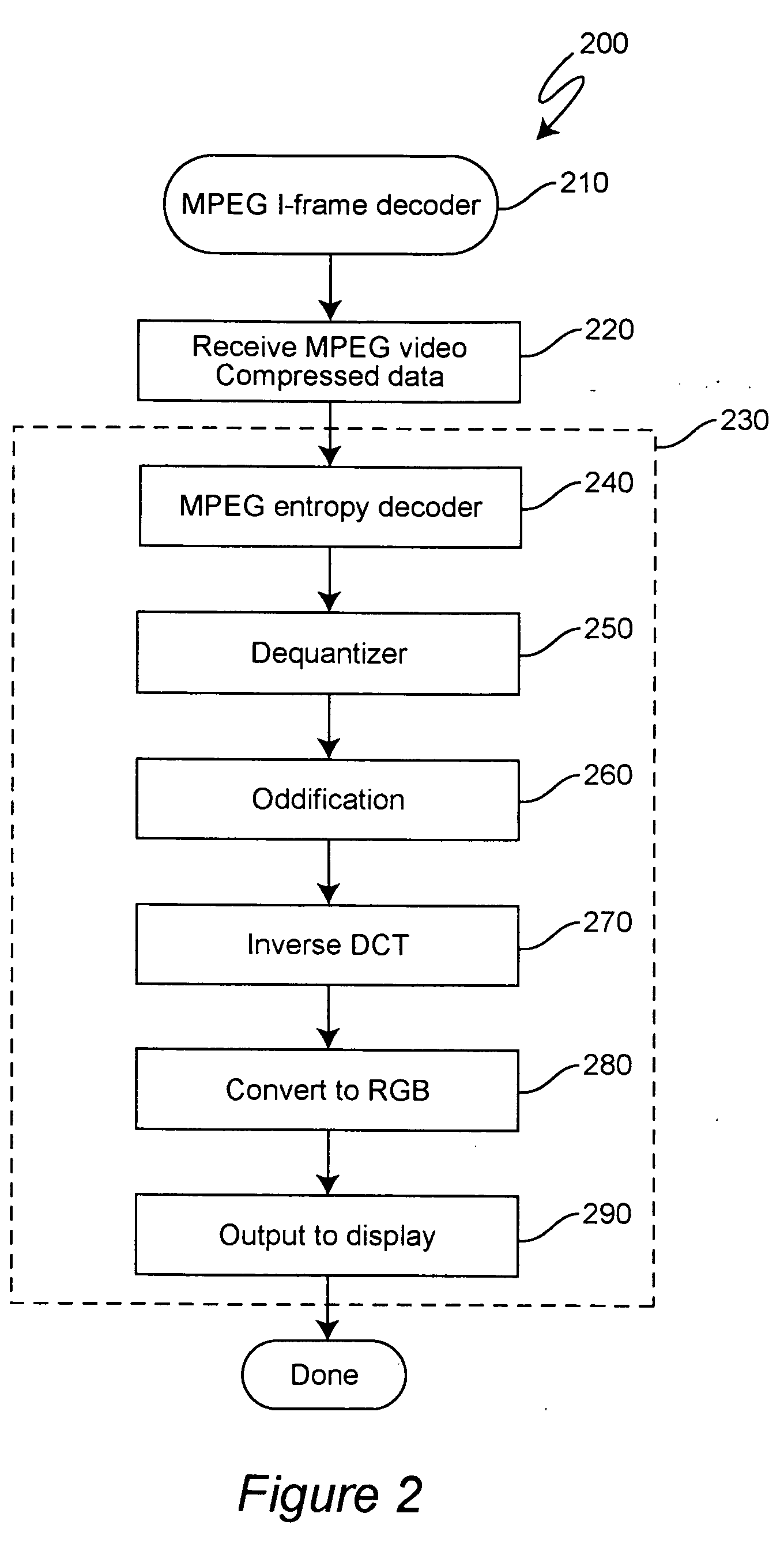The sheer quantity of data in images therefore presents a severe processing burden.
However, pictorial data is often susceptible to substantial
data compression without significant loss of image fidelity.
However, it is often the case that data compression by a factor of twenty or more (and reduction of transmission or processing time and storage capacity by a comparable factor) will not produce artifacts which are noticeable to the average viewer.
Since maximum preservation of image fidelity relative to image
data file size and the flexibility to customize compression techniques to
exploit characteristics of
image content are principal goals of the
JPEG standard, encoding and decoding may be computationally intensive and require significant amounts of time for a
single image, particularly since
JPEG coding and decoding is usually carried out in software (since it is generally efficient to download the particular portion of JPEG corresponding to the
image content with the image rather than to determine the particular JPEG family member with the properties best corresponding to image and file content from resident software or hardware) and the higher speeds of special purpose chips are not generally available to most users.
However, software implementations of JPEG processing may not allow the frequency of
image presentation to be acceptably high consistent with providing images adequate for recognition.
However, MPEG decoders and the MPEG standard itself are not well-adapted to decoding of sequences of independent images (even though independent “I-frame” images are periodically decoded, with intra-coded B-frames and P-frames between them, in accordance with the MPEG standard) and cannot be directly used for single images encoded under the JPEG standard while preserving the detail and fidelity desired in single images.
In fact, since the anticipated applications for JPEG and MPEG were quite different when those standards were promulgated, incompatibilities between the coding techniques were tolerated such that
transcoding from JPEG to MPEG data was not considered practical or even possible without unacceptable reduction of
image quality even though MPEG to JPEG
transcoding was supported.
Therefore, while economically justifiable, the utility of special purpose moving picture decoder chips and STBs is quite limited relative to the amount of compressed
digital image data and digitized and compressed libraries of images currently available and foreseeable.
In summary, while JPEG processing provides optimal
single image quality for a given data volume, it is only widely available in software implementations that do not support desired
image presentation frequencies for browsing or full
image presentation or full resolution at presentation rates (or
throughput in regard to, for example, decoding of a
single image or several images which may each be very large) approaching those frequencies.
Current applications do not economically support widespread availability of special purpose hardware to increase JPEG encoded image presentation speed notwithstanding the development of many libraries which would most desirably be accessed by browsing.
Widely available MPEG hardware capable of suitably high image presentation frequency is not compatible with JPEG encoded data and, at the present state of the art,
transcoding from JPEG to MPEG is considered to be impractical and to lead to unavoidable and generally unacceptable reduction in image fidelity, particularly if the transcoding process is lossy.
 Login to View More
Login to View More  Login to View More
Login to View More 


